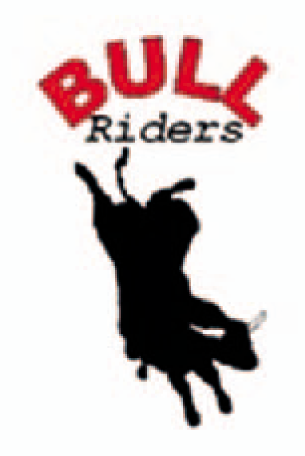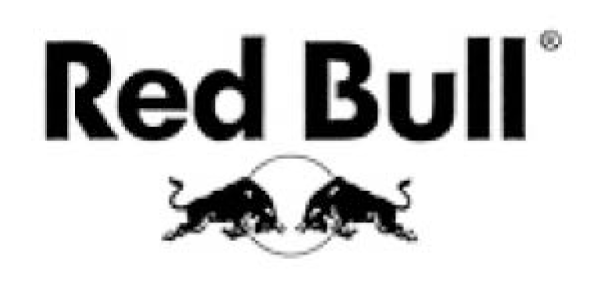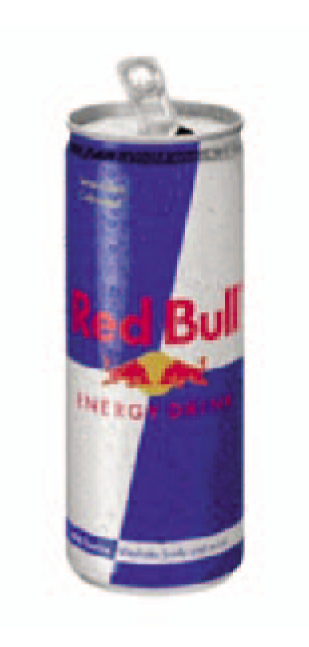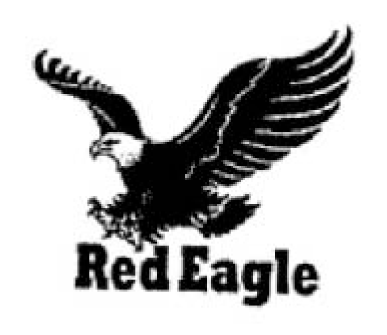Background
Red Bull GmbH had a busy 2012, as it sought to secure protection against a number of third parties for similar trade marks or get-up in Australia. The energy drinks company was successful in preventing the registration of the RED EAGLE logo by Chia Khim Lee Food Industries Pte Ltd (“Chia Khim”) and the TORO LOCO ENERGY DRINK logo by Javier Abollado Bris and Myriam Mugica Amilibia.
Red Bull then went on to win two further favourable decisions from the Delegates of the Registrar, before contending with an appeal by Chia Khim in relation to the RED EAGLE trade mark. The following examines each of these later cases.
Bull Riders Case
Red Bull GmbH v. Bull Riders Incorporation (Thailand) Limited [2012] ATMO 115
Bull Riders Incorporation (Thailand) Limited applied to register the following trade mark in relation to clothing items in Class 25 and non-alcoholic drinks, including energy and sports drinks in Class 32.
Whilst Red Bull opposed this application on a number of grounds, the delegate ultimately found in Red Bull’s favour in relation to section 44(1) of the Trade Marks Act 1995 (Cth) (“the Act”).
Section 44 provides that an application for a trade mark must be rejected if it is substantially identical with, or deceptively similar to a trade mark registered by another person in respect of similar goods or closely related services.
In support of the opposition, Red Bull listed a number of its earlier trade marks which it considered to be deceptively similar to the application. However, the delegate only found it necessary to consider one of these trade marks in reaching the conclusion that the marks in question are deceptively similar, namely the following composite mark.
In order to assess deceptive similarity, the delegate considered the established cases on the issue. He reiterated that it is necessary to show a real and tangible danger of deception or confusion occurring, and that a trade mark is likely to cause confusion if the result of its use will be that a number of persons are caused to wonder whether the products come from the same source.
The delegate agreed with the arguments put forward by Red Bull, including:
- The impression of Bull Riders’ application is of a bull and the colour red;
- The word “Riders” is in a smaller, thinner font, making it less noticeable;
- The word “Bull” and the image of a bull together create a dominant impression of a bull in the trade marks;
- Neither the word “Bull” or image of a bull is an obvious descriptive or laudatory term in relation to the goods in question;
- The colour red is not an obvious descriptive term for bulls as it is not their normal colour; and
- There are no other registrations for or containing the word “Bull” or a bull device, covering energy drinks, except for those owned by Red Bull.
Although not strictly relevant when comparing trade marks for the purposes of s 44(1) of the Act, the delegate also considered surrounding circumstances. These included the fame of the RED BULL brand and the impressive sales revenue, market share and promotional activities of Red Bull, and the fact that Bull Riders did not file any response to the opposition or attend the hearing. In addition, Red Bull’s marketing strategy included sponsorship of athletes who are often referred to as Red Bull Riders or Bull Riders.
Replay Energy Drink Case
Red Bull GmbH v. Altanea Gida Anonim Sirketi
[2012] ATMO 120
Altanea Gida Anonim Sirketi (“Altanea”) applied to extend the protection to Australia for the following international trade mark in relation to a variety of drinks in Class 32.
Red Bull also opposed this application on a number of grounds, but the delegate ultimately found in Red Bull’s favour in relation to s 60 of the Act.
Section 60 provides that an application can be opposed if another trade mark had, before the priority date for the registration of the first-mentioned trade mark in respect of those goods or services, acquired a reputation in Australia, and because of the reputation of that other trade mark, the use of the first-mentioned trade mark would be likely to deceive or cause confusion. Section 60 is typically a difficult ground to prove, and generally requires that the earlier trade mark have a very substantial reputation and that a significant number of people are likely to be deceived or confused.
In support of the opposition, Red Bull relied on the reputation which it enjoyed in its trade dress.
It was clear that the delegate was impressed by the evidence submitted by Red Bull, which he considered to demonstrate “simply enormous” sales, “very large sums” invested in advertising and promotion, a significant market share and a “very significant” and “impressive” reputation in the trade dress in Australia.
Since it was amended in 2006, s 60 does not require the goods or services of the earlier trade mark to be similar or of the same description, and neither do the trade marks need to be substantially identical or deceptively similar for the ground to succeed. However, such findings may assist in determining the likelihood of deception or confusion. In this case, the delegate found that the Red Bull trade dress and Altanea’s trade mark shared unmistakable features, including similar colours, geometric background and font.
The delegate also took into account the way in which the goods would be sold, including how they would be presented at the point of sale. He concluded that the colour of a can of this size was likely to attract more attention than the brand name, plus the fact that the goods in question are cheap consumable items meant that consumers would purchase without close consideration or inspection. Also discussed was that fact that the parties were involved in disputes in other jurisdictions and Altanea had engaged in a pattern of evasive conduct.
All of these factors led the delegate to the conclusion that Red Bull’s opposition should be successful under s 60 of the Act.
Red Eagle Case
Chia Khim Lee Food Industries Pte Ltd v. Red Bull GmbH (No 1) [2012] FCA 1184
Earlier in 2012, Red Bull successfully opposed registration of the RED EAGLE logo (in black and white) by Chia Khim.
However, Chia Khim then appealed the decision and has also applied to remove Red Bull’s registration for RED HAWK (which it successfully relied on in the opposition) on the grounds of non-use. In the opposition proceedings, the delegate found that the RED HAWK and RED EAGLE trade marks were deceptively similar.
Chia Khim appealed the decision on the basis that the delegate had erred in his finding that the marks were deceptively similar. Further or alternatively, Chia Khim contended that if the registration for RED HAWK was removed, then there would be no citation under s 44(1) of the Act and the application for RED EAGLE should be accepted. Chia Khim then requested that the non-use removal application be referred to the Federal Court, so that the appeal and the non-use removal application could be heard together.
In response, Red Bull argued that the relevant date for assessing an objection under s 44(1) of the Act was the filing date of Chia Khim’s application, and even if the RED HAWK registration was removed, the removal would not operate retrospectively. On that basis, Red Bull contended that the outcome of the non-use application has no bearing on the appeal, and requested that this ground of appeal be struck out.
Chia Khim argued that the wording of s 44 did not expressly state that the filing date of the application was the date on which the parties’ rights should be determined. Chia Khim also relied on the wording of the Trade Marks Regulations 1995 (Cth) (which provide for deferral of pending applications when a removal application has been lodged against the cited mark), decisions of previous delegates and a UK decision to support its argument.
The matter was referred to the Australian Federal Court and Justice Dodds-Streeton considered the matter. Her Honour refused to strike out the ground of appeal relating to the non-use application, on the basis that no Full Court or single judge has comprehensively assessed the arguments advanced by Chia Khim, and those arguments were not insubstantial and were supported by a number of decisions of hearing officers.
It therefore appears that Red Bull will remain busy policing its trade marks in Australia in 2013, as the dispute with Chia Khim continues in the Federal Court.
Learn more about Bloomberg Law or Log In to keep reading:
Learn About Bloomberg Law
AI-powered legal analytics, workflow tools and premium legal & business news.
Already a subscriber?
Log in to keep reading or access research tools.




